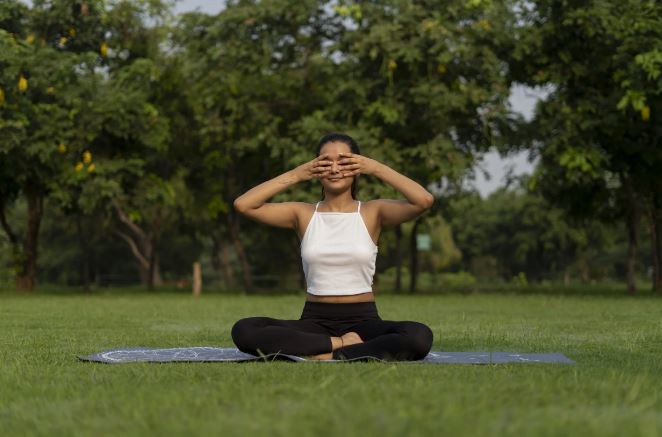 Breathwork has been a part of yoga for thousands of years. In the eight-limb path of yoga that is laid out in the Yoga Sutras of Patanjali, we are shown the importance of pranayama, the fourth limb. There are so many benefits of pranayama, and the significance of the practice are relatively new to Western culture. In recent years, there have been a number of research articles published on the topic which have shed light on the vast health benefits of pranayama.
Breathwork has been a part of yoga for thousands of years. In the eight-limb path of yoga that is laid out in the Yoga Sutras of Patanjali, we are shown the importance of pranayama, the fourth limb. There are so many benefits of pranayama, and the significance of the practice are relatively new to Western culture. In recent years, there have been a number of research articles published on the topic which have shed light on the vast health benefits of pranayama.
In the Eight-Limb Path of Yoga, pranayama is the fourth limb. It comes after yamas, niyamas and asanas and it comes before pratyahara, dharana, dhyana and samadhi. Traditionally, yogis would first practice yoga postures to work the tension out of the body which would help to prepare the body to sit still for breathwork and meditation. Once the asana practice was complete, yogis would then begin pranayama practices which would be followed by meditation. Pranayama practices help yoga practitioners to turn inside, withdrawing from all senses to transition into meditation.
There are many benefits of practicing pranayama, and there are many different types of pranayama practices. Some people enjoy relaxing breathwork, such as deep belly breathing. Others enjoy learning how to practice kapalabhati and more vigorous breathwork practices designed to energize the body. While all pranayama practices offer their own unique effects, it is fair to say that there are universal benefits to all pranayama practices.
Some of the benefits of pranayama may include relaxing the mind and body, increasing awareness, decreasing stress, improving sleep quality, increasing mindfulness, reducing high blood pressure, improving lung function, enhancing cognitive performance, calms the nervous system and improves our stress response, eliminates harmful carbon dioxide and raises oxygen levels, fueling brain cells and strengthens lung function which increases the ability of the immune system.
In the last couple of years, there have been a number of articles published as a result of research on pranayama and the science behind this breathwork. In his book on the breath, James Nestor discusses a study that was performed on schizophrenic women. In the process of research, we’ve learned that one nostril is always dominant at any given time. During this study, it was determined that schizophrenic women tend to breathe more dominantly out of the left nostril than the right. This activates the right hemisphere of the brain which is responsible for our imagination. When breathwork teachers worked with the women, they trained them to breathe out of the right nostril, which would activate the left hemisphere of the brain. The left side of the brain is more logical and fact based. Once the women received the breathwork training, they reported having fewer delusions.
This was just one of many studies that shows the amazing outcomes of breathwork practices. With all of this research coming to light, many yoga teachers are interested in getting certified in breathwork. While 200 hour trainings cover a few basic pranayama practices, pranayama teacher trainings offer more information about the science of breathwork. There are many options out there and finding the best breathwork certification for you is a personal choice.
